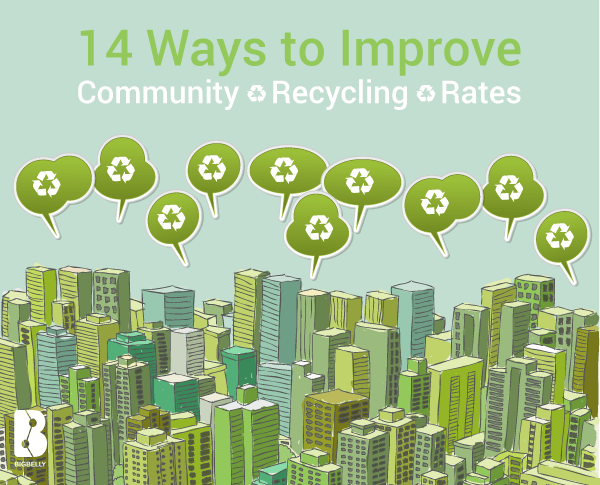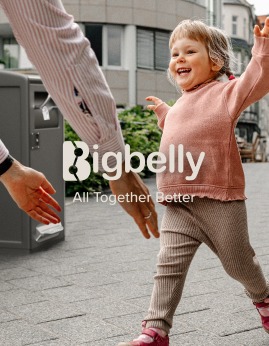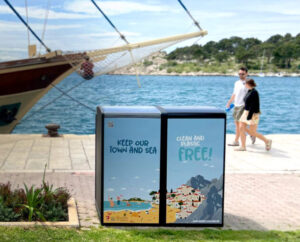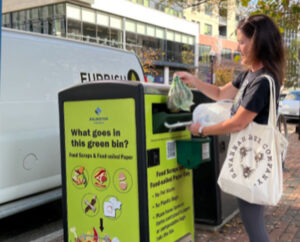There’s a lot to be said about improving municipal recycling efforts. It helps to keep public spaces clean, eradicate pest problems, and provide measurable environmental benefits by waste diversion from landfills. Towns can also reduce tipping costs and other expenses related to waste disposal, and increase credits recycling incentive programs.
“Even in small cities, the returns from an efficient recycling program can have quite an impact,” according to the EPA. Participation in urban recycling can be challenging but it’s often due in part to the programs in place. We know that city recycling programs need to appeal to a large and diverse population. Programs focused on increasing participating help to improve recycling rates. Below are a few interesting recycling stats from the EPA’s latest national survey in 2009, as reported by our friends at Keep America Beautiful:
- Americans recovered 34% of waste generated in 2009.
- About 9,000 curbside residential recycling programs existed in the US that year.
- The 34% diverted waste equaled 82 million tons of recycled material.
- This national wide recycling behavior reduced CO2 emissions in a mass equal to removing 33 million passenger vehicles from the roads.
- The US recycling industry workforce is comprised of 1.1 million employees, generating over $236 billion in annual revenue.
- The recyclable materials left in the US landfill waste stream would have amounted to over $7 billion if properly recycled.
- There was 3 pounds of trash per person per day thrown away into the landfill waste stream; that is enough trash to circle the earth 24 times.
(Statistics sourced from Keep America Beautiful.)
Even towns and cities with small budgets can increase recycling rates and reap financial rewards. Every community, city, and town that implements public space recycling programs helps to boost recycling rates and the recycling industry. A few suggestions for evaluating existing recycling programs and ideas that drive more citizen engagement include:
- Operations: Add Recycling Bins in Public Spaces
Enhance your city or town’s core waste service by adding a recycling option at the point of disposal in your parks, on your sidewalks, or at your transit stops. Simply placing a recycling bin next to a landfill waste bin encourages constituents to properly dispose of their recyclable waste. - Communication: Community Newspapers/Newsletters as Communication Vehicles
Share metrics of success (amount of recycling month to month, year to date, diversion from landfills, etc.), explain the benefits of recycling, share details about the recycling supply chain. - Operations: Target Non-Recyclers
Consider targeting a recycling message to a certain community. Learn from your collectors where the empty bins are often located; leverage the voices of community leaders to spread the word; use public space to advertise (side of recycling trucks and bins, bus stop billboards, sides of buses); understand the objections or barriers to recycling and how to address them with your community in mind. - Communication: Educate the Community
Use social media or a website dashboard to promote recycling programs and increase participation; share valuable information with residents and businesses about acceptable recyclable materials; and provide contact information for who to call for public space waste questions or about delayed/missed pick ups. - Communicate: Goals and Benefits
Set goals and report on recycling achievements and how they tie to benefits that residents and businesses understand and realize. - New Programs: Focus on Schools
Our youngest citizens are often the strongest change agents. Laying the grounds at an early age will encourage recycling behavior regardless of location. - Communication: Engage New Homeowners
Distribute welcome packets that detail the community’s recycling programs and encourage participation and recycling behavior from day one in their new community. - New Programs: Implement Volume-based Waste Disposal
Incentivize residents to recycle or, alternatively, pay extra to dispose of recyclables in landfill waste streams. - Logistics: Focus on Efficiency
Design efficient collection routes that might be supplemented with collection from businesses and retail centers to decrease usage of the most expensive aspects of a recycling program (labor, fuel, and equipment). - New Programs: Create Community Drop off Locations or Events
Stage hazardous materials (paint, pharmaceuticals, chemicals), paper shredding and recycling festivals, beach or park clean ups. Make sure the sites and events are clearly labeled and easily accessible. Keep track of how facilities and events perform and ensure adequate facilities to meet community demand. Consider locations like fire and police station parking lots to base collection bins. - Logistics: Adjust Collection Techniques
Evaluate current operations and plan for the future – if trucks are not running at full capacity, can you add new materials to the recycling program, leverage technology which allows you to plan routes efficiently, or include local businesses in the collection routes? - New Programs: Consider a Collection Co-op
Work with neighboring towns to pool materials, increase recycling, and efficiency of scale. - Operations: Evaluate the Business Economy Side of Recycling
Know the ins and outs of your programs – how crews handle equipment; equipment cleanliness; contaminants entering the waste stream; level of support from staff; markets and demand levels. - Local Government: Communicate with and Engage Elected Officials
Share metrics and successes! Include them in the education about recycling benefits, empower them, help them feel they are part of the overall effort, and support recycling legislation.
Communicate, communicate, communicate! The more visible and vocal the more likely residents, visitors, and businesses will perceive high rates of recycling and up their participation. Towns should get in the habit of publicizing program changes, and highlighting top-notch recyclers. Leverage existing core services such as waste management to implement community-wide public space recycling. Where curbside pickup is available, encourage residents to set out recycling bins even if they are not full. Towns can distribute promotional materials during collections. Part of the communication includes reminding residents to never let recyclables enter the trash. For more information, including case studies visit the EPA website: http://www.epa.gov/region4/rcra/mgtoolkit/improving.html




